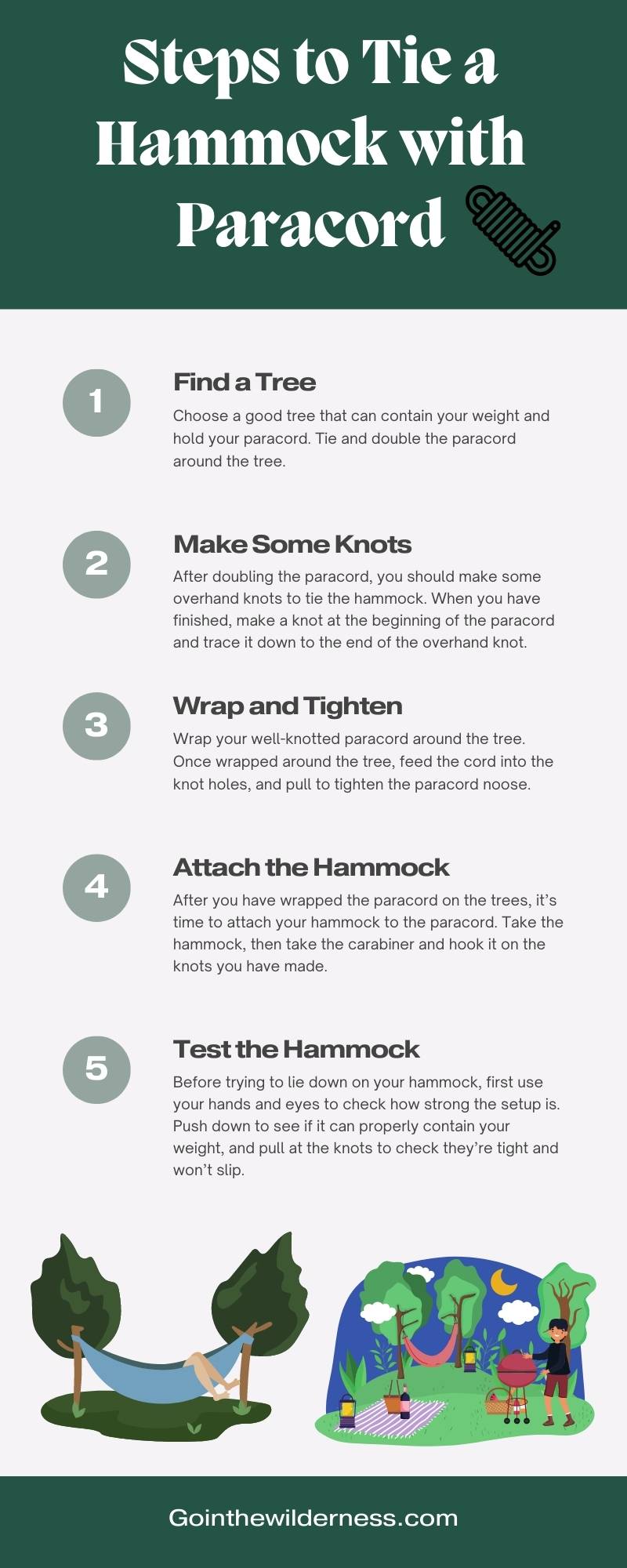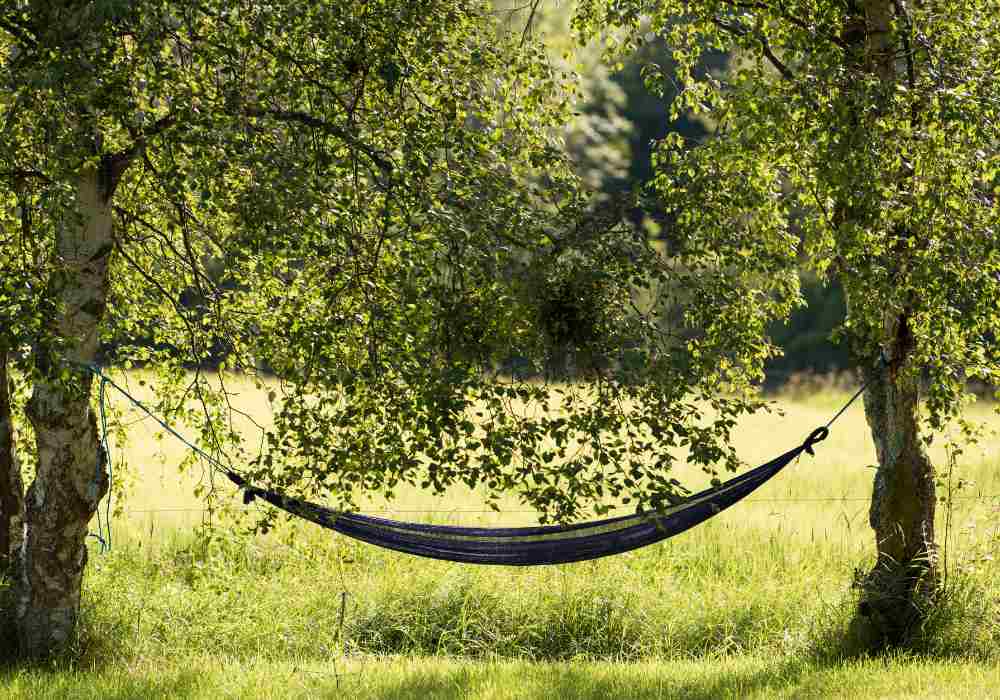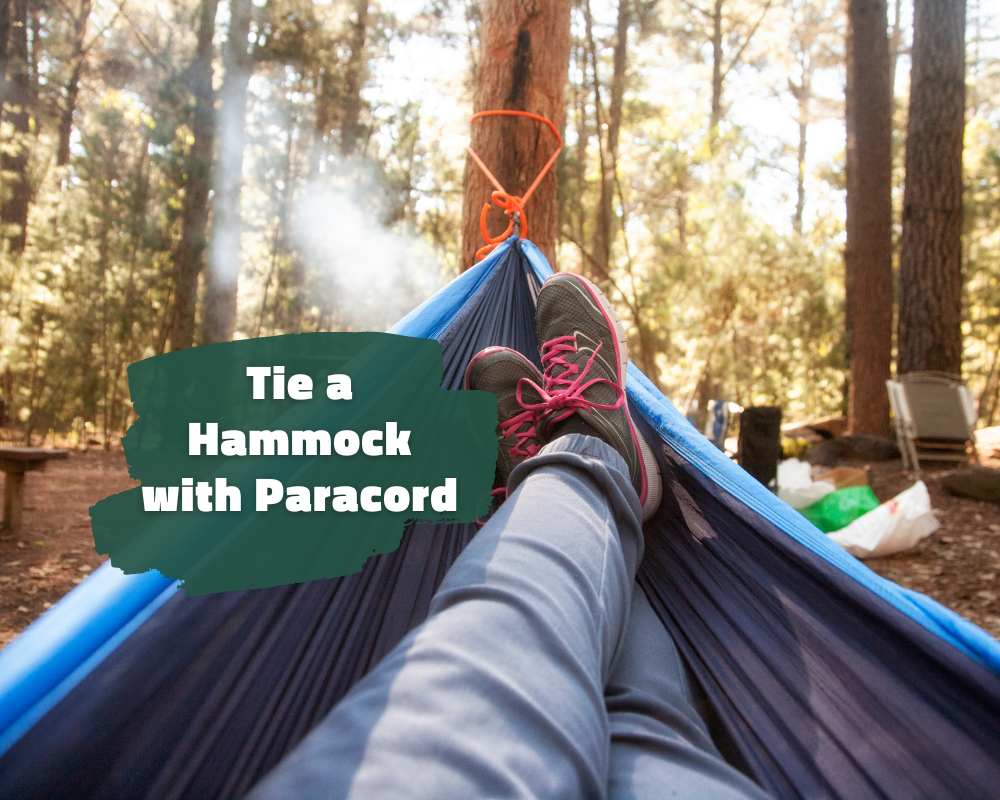A hammock is ideal for relaxing and sleeping outdoors, but you need the right suspension system to hold it in place. Paracord is the perfect solution as it is durable and strong, while also lightweight and easy to pack into your kit.
In this guide, you’ll get to know more about tying up a hammock with paracord, including precautions to take, a step-by-step guide, and tips on how to protect trees.
Can All Paracords Hold a Hammock Firmly?
Paracords are strong, durable, and lightweight, making them great for holding up a hammock. Make sure your paracord is of high quality and that you dispose of it if it gets torn or worn out. Otherwise, you might fall from your hammock and get injured.
As a rule of thumb, a single paracord can hold around 550 pounds of weight. When doubled, it can carry over 1000 pounds. But remember that the durability of your hammock also plays a part. You might have a reliable paracord, but if your hammock is low quality or worn and torn, you could also risk getting injured.
Precautions to Take
- Before you tie a paracord to a hammock, make sure the cord is rated for the weight you intend to use it for.
- Secondly, ensure that the cord is in good condition; paracords aren’t expensive so it’s best to buy a new one rather than use an old one or buy one second-hand.
- Thirdly, you should also make sure you’ve mastered the technique and knots you need to use to tie your hammock.
- Lastly, once you’ve tied up your hammock, you should keep an eye on the paracord and check if it stretches as time goes by (this is likely if it’s carrying a weight of over 160 pounds). If that’s the case and your paracord stretches, you might need to make adjustments to your knots.
Steps to Tie a Hammock with Paracord

Step 1: Find a Tree
First, you should choose a good tree that can contain your weight and hold your paracord. Tie and double the paracord around the tree. Doubling is important because it increases the strength of the rope by twofold. If you double it properly, it should be able to hold over 1000 pounds in weight.
Note: Doubling the paracord also prevents excessive stretching, which is what usually happens if you spend a prolonged time on your hammock (e.g. when sleeping).
Step 2: Make Some Knots
After doubling the paracord, you should make some overhand knots to tie the hammock. When you have finished, make a knot at the beginning of the paracord and trace it down to the end of the overhand knot. Do the same for the other end and knot them properly until it becomes a strong paracord.
Step 3: Wrap and Tighten
Now it’s time to wrap your well-knotted paracord around the tree. Make sure the tree is healthy and tough enough to hold it. Once wrapped around the tree, feed the cord into the knot holes, and pull to tighten the paracord noose. Repeat this process until you have wrapped the paracord around all the trees you need.
Step 4: Attach the Hammock
After you have wrapped the paracord on the trees, it’s time to attach your hammock to the paracord. Take the hammock, then take the carabiner and hook it on the knots you have made. Be sure to attach the buckle for the first available knots, and ensure the buckle is firm and properly attached. Next, attach the other side of the hammock to the trees using the same method.
Step 5: Test the Hammock
Before trying to lie down on your hammock, first use your hands and eyes to check how strong the setup is. Push down to see if it can properly contain your weight, and pull at the knots to check they’re tight and won’t slip. Once that’s done, you can lie down on your hammock and enjoy a lovely rest among the trees!
Can Hammock Paracord Harm Trees?

During bushcraft, you should always make consideration for wildlife. Luckily, a hammock doesn’t always harm a tree if you attach the right type of paracord and use the right technique. Here are some tips for how to ensure that.
Firstly, you should consider which trees you use—look for healthy trees that have a lot of leaves on the branches and avoid unhealthier trees that have fewer leaves or branches. A healthier tree is stronger and can withstand more pressure.
Secondly, pay attention to what kind of paracord you use. A thin paracord might cause harm to tree bark, but a wider paracord won’t cause as much harm—so use a wider paracord if you can.
Lastly, during the knotting and wrapping stages, make sure you distribute the weight evenly so that one tree doesn’t take all the weight. Doing this will help preserve each tree’s bark.
Conclusion
Relaxing in a hammock is always fun, and it’s even more fun if you know how to tie up a hammock properly! Using the right trees, materials, and technique will ensure that you enjoy maximum comfort when hammock camping—and minimal risk of accidents or erosion. Time to try it out!
I am Bruno. Navigating the urban rush by day, I find peace under the stars by night. Alongside my loyal companion and co-adventurer Lilith, we explore the balance between city life and nature’s embrace. Through writing and films, I delve into bushcraft and the wild’s allure.
GointheWilderness is my bridge between these two realms, guiding you to reconnect with your innate wilderness.
Eden is here and now; join us in rediscovering it.

